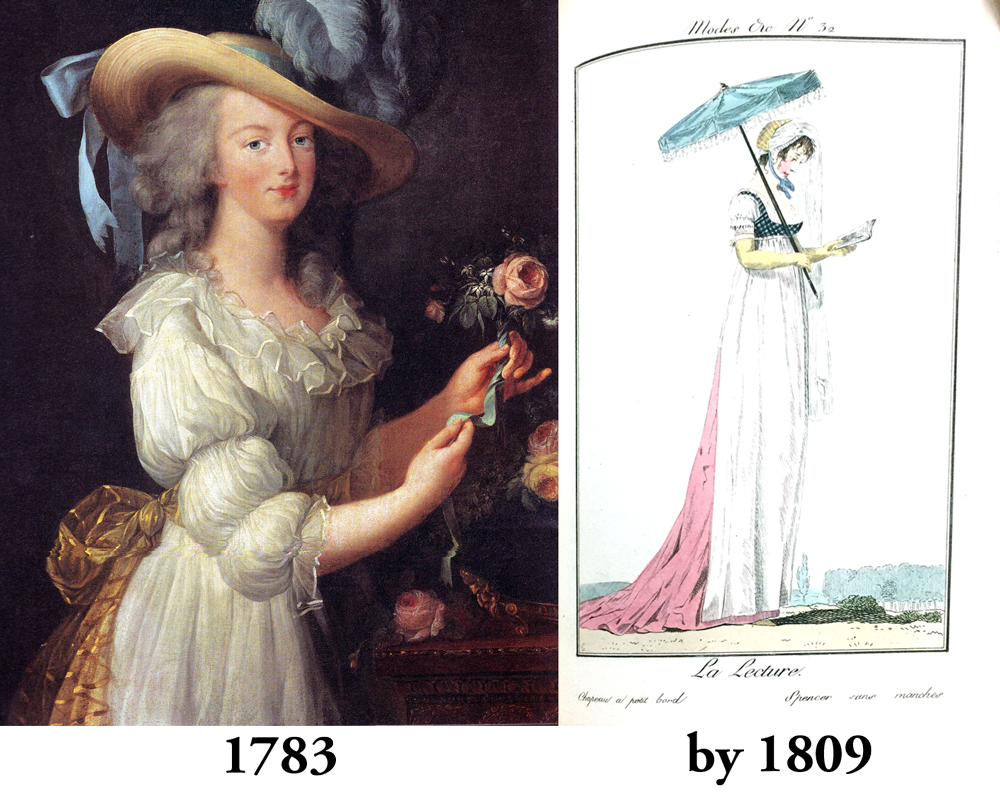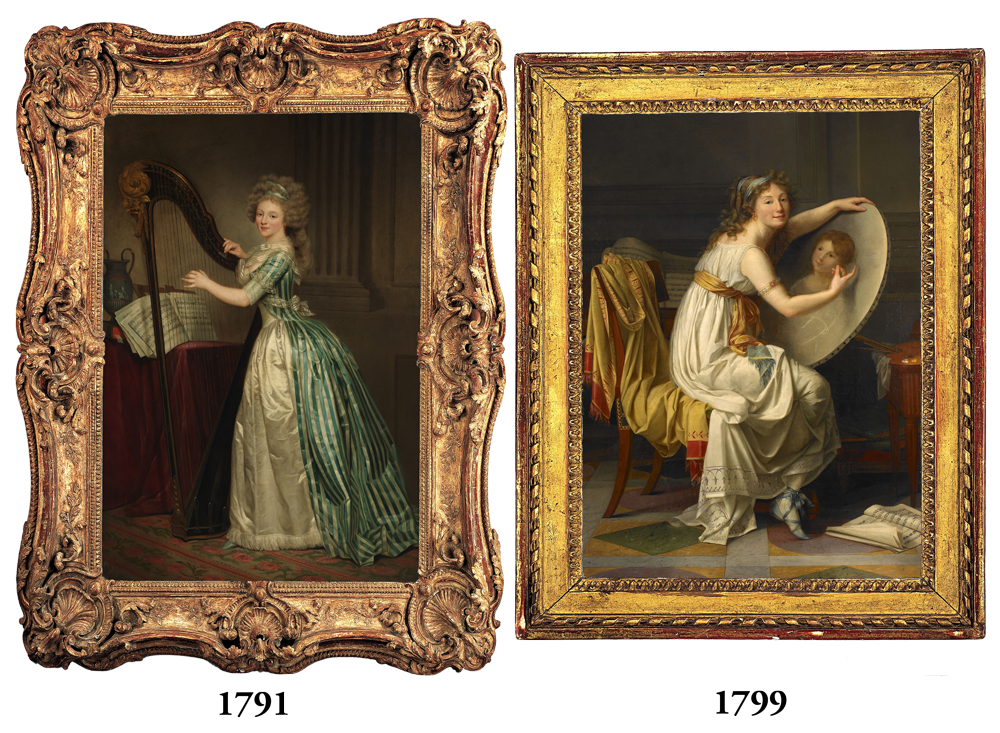Is that the same woman?
Yes, these two paintings are both believed to be self-portraits of Rose Ducreux, painted approximately eight years apart. While at first glance the women depicted appear very different, further examination reveals many similarities in both subject matter and style. Both portraits emphasize the materiality of draped textiles, depicting silk, tassels, lace, ribbon, embroidery, gauze and linen. Sheet music and books are depicted, highlighting Ducreux’s talent as musician and enlightened individual. The highly detailed treatment of the floors and textiles in both portraits display Ducreux’s skill without drawing attention away from the central figure. The accessories worn by Ducreux are similar in both portraits – she wears blue satin shoes, gold hoop earrings, and a blue ribbon wrapped twice around her head.
Why does she look so different?
Over the course of the eighteenth century French taste in fashion changed dramatically. Before the French Revolution, Marie Antoinette was a style icon and during her reign attire became increasingly elaborate. Huge powdered hairstyles and headdresses topped heavily ornamented formal gowns, and less-restrictive dress forms, like the Robe à la Polonaise, became popular daily wear. Vertical stripes, like those on Ducreux’s dress, became en vogue during the 1770s and remained popular through the 1780s. Although the portrait on the left was finished after the revolution began, changes in style took more time to be put into common practice than government policies, and Ducreux’s choice in dress likely reflects both her personal taste and her family’s longtime connection to the monarchy.
Who set the fashion?

The 1799 portrait shows the turn towards simplicity that style took following the French Revolution. The French were inspired by an antiquity they believed to be simple, pure, and ordered. Dresses gathered under the bust and falling straight to the ground which made the body resemble a capital topped white marble column, came into fashion and were made with inexpensive new imported fabrics, such as thin cotton muslin and linen. Although this style became widely popular after the revolution, Marie Antoinette had been known before the Revolution to wear muslin while not at court, and was painted in a muslin dress by her portraitist, Elisabeth Vigée-Lebrun, in 1783. Muslin was not warm enough to be worn alone in winter in France, so women frequently wore shawls, often made of cashmere, like the one seen draped over Ducreux’s chair. The political and social priorities of the immediately post-revolutionary period can be seen in the simple comfort of the muslin chemise dress and its popularity.
